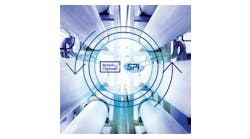Q: I”ve heard pros and cons to discharging water softener salt brine into a septic system. If you don”t dispose into a septic can you dispose of the salt brine any other way?
A: Two or three different scientific studies have been commissioned by the Water Quality Association (WQA) since the 1970s. These studies were performed without WQA involvement by nationally known independent engineering institutes. The following are quotes from two of the completed studies. The complete studies are available from the WQA.
“It is not true that water softener regeneration discharges pose a problem to septic systems or to the leach field. Studies have shown that water softener regeneration wastes not only do not interfere with the septic tank system drain field soil percolation, but, actually could, because of the polyvalent water hardness cations in the regeneration discharges, improve soil percolation particularly in fine-textured soils.”
“The conclusion drawn from these tests is that softened water is not harmful to a normally operating septic system or drainage field. Obviously, this is good news to anyone who has suffered through dingy dishes or clothes, or struggled with precipitate buildup in pipes due to hard water. Homeowners can enjoy all the benefits of soft water without worrying that it will disrupt the efficiency of the household septic system.”
I don”t know of other good options to dispose of softener regenerant waste. I have heard of it illegally being discharged into the soil, but to me that is an unsuitable solution.
Q: I own Key Harbour Lodge, where I rent out five cottages. The government said I had to install a NSF rated UV (ultraviolet) light for microbiological protection. My water comes out of a drilled well. My water has tannins in it and I keep getting different answers from people as to what I need to do to take care of this properly as to avoid having problems in the future.
I have an old softener system and am happy with it, but it”s not sufficient. My maximum flow rate is seven gpm and my light is rated for 10 gpm. I would like to set it up so I could increase the flow rate, if needed. I now have water come in through my pressure tank and through three four-inch by 20-inch cartridge filters. They are 10-micron, 5-micron and activated carbon. Then, the water passes through the old softener which I want to replace with an up-to-date softener/tannin removal system.
After that I want one more four-inch by 20-inch, 5-micron cartridge then the 10 gpm UV light before going to the cabins. What should I get for softening and tannin removal? A softener/tannin mixed bed, two separate units and twin-tank systems? Everyone has an opinion and none are the same.
I just want everything working properly and efficiently. I was leaning towards another softener like my old one but then was informed that it is not a tannin removal system. Please help. Here is my water analysis report:
- Hardness (calcium + magnesium): 7 gpg
- Iron, ferrous (soluble): 0.2 ppm
- TDS (total dissolved solids): 104 ppm
- pH: 7.5
- UV transmission: 58.6 percent
- Manganese: <0.05 ppm
- Tannins: 1.8 ppm.
The company that did the testing recommended using their equipment, which I have not been able to get a price for. Here is their recommendation: A 10 x 54-2 water softener followed by a 13 x 54-TA tannin remover.
– Key Harbour, Ontario
A: I recommend that you keep your present cartridges, follow with a properly sized softener. An alternating would be nice. Follow with a properly sized tannin resin unit. Again, alternating twin would be nice. The ones sized by your testing lab seem reasonable. Then, use the UV last. It may need a prefilter. You cannot set the UV for a higher flow rate. You will have to add another one in parallel.
Q: Can I remove silica with an anion resin exchange, if so how much salt per cubic foot is required? It is for residential use. It is creating scale and water spots.
Would the anion resin be before or after the cation softening resin? With silica in the water, would it have an effect on the cation resin that has been in use for 10 years? I do not know the amount of silica that is in the water.
– North Carolina
A: Silica does not leave a deposit except under high pressure and high temperature, as in an industrial boiler. This is the only circumstance under which we need to remove it. The scaling is a problem, especially on turbine blades. In a house it does not deposit a scale. If you believe there is a silica scale deposit then there should be an analysis of the scale. I doubt if it is silica.
Ideally, there should be a raw water analysis before and after any treatment for silica. Normally, this test would be for SiO2, silica dioxide.
Yes, it is removed with anion resin but it is not practical to use the type of equipment in a residence that is used in industry because it involves the use of acid and caustic soda.
Q: I”ve been experiencing premature, three to six months, plugging of 5-micron carbon block filters on the attached city water supplies. Water pressure averages 80 psi. Visual inspection shows a slight reddish film on outer element surface. Could polyphosphates or some other municipal treatment be causing this?
– Des Moines, Iowa
A: Nothing in the city water report indicates a reason for the filter plugging. In fact, the water looks very good with only a trace of sediment or turbidity. You might check with them to see if they”re feeding phosphates as corrosion control. You could have iron leaching from old pipes in the distribution system. Try experimenting with a coarser cartridge just to see what you can learn.
Q: I am researching and looking for credible information on water softening and descaling for residential hard water systems. I”ve always used a salt-regenerated softener system, but have been trying to find out for the past decade if there are any better solutions.
I came upon two websites selling salt-free, chemical-free systems. Do you know if this is a proven technology? Does it work or not, is the bottom line.
A: I have not seen any credible studies that show these systems to deliver, as promised. Nor have I read any credible explanations as to why the technology would work.
They do rely quite heavily on satisfied customer testament, but that is often not reliable enough.
David M. Bauman, CWS-VI, CI, CCO, is technical editor of Water Technology® and a water treatment consultant in Manitowoc, Wis. He received his B.A. from the University of Illinois in Industrial Design. He can be reached by email at: [email protected].
To pose a question to “Professor POU/POE,” go to www.watertechonline.com, click “Ask the Professor” and follow the instructions.

